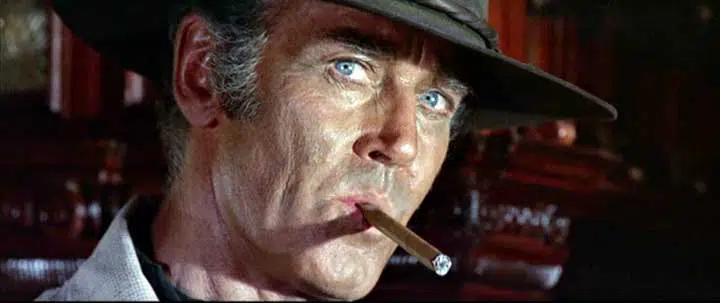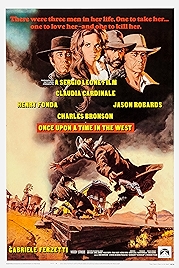By 1967, after countless Italian sword and sandal epics and three astonishingly successful spaghetti Westerns (A Fistful Of Dollars, A Few Dollars More and The Good, The Bad And The Ugly), director Sergio Leone was tired of men in period costume and was eager to try his hand at something more contemporary.
It wasn’t to be. Paramount studios prevailed upon Leone to make one more western for them. In return they promised to fund his four-hour, four-decade overview of organised crime, Once Upon a Time in America. Leone’s fourth Western could easily have turned out to be a 90-minute contractual obligation, with Clint Eastwood, Lee Van Cleef and whoever was available squinting hard into the sun and doing little else. Instead he delivered C’Era Una Volta Il West (its Italian title), a Western that went beyond anything Paramount had any right to expect. Put simply, he gave them one of the best films ever made.
To do it, Leone sat down with two other pillars of Italian cinema – Bernardo Bertolucci (yet to make Last Tango In Paris) and Dario Argento (the one-man Italian horror industry) and came up with a simple plot about how the railroad brought about the end of the Old West. They then spent months obsessively watching and dissecting scores of classic American Westerns – films like The Iron Horse, Stagecoach, Shane and High Noon. It’s a working method that is now familiar but was then revolutionary. The result is not a film about the West, but a film about films about the West.
Not for nothing has Once Upon a Time in the West been dubbed “the world’s first postmodern movie”. But the Italian trio weren’t trying to get themselves into cultural studies courses of the future; they were trying to make the most audacious Western ever.
This audacity manifests itself in every fibre of the movie’s being, starting with the movie’s intensely slow pace, exemplified by the opening credit sequence which introduces us to what must surely be the movie’s main characters, only for those main characters to be mercilessly, shockingly, killed off almost immediately. We are then treated to the sight of the noblest American actor of them all, Henry Fonda, playing a deeply unpleasant baddie. Equally revisionist is the placing of a woman (Claudia Cardinale) at the centre of the story.
The rest is Leone as obsessive craftsman. No Western ever looked better –Tonino Delli Colli used a deep-focus technique and exquisite Technicolor to make the most of locations like Monument Valley, John Ford’s Arizona stomping ground of decades before (a devil to colour-match when shooting shifted to Almeria, Spain). Nor are many Westerns lucky enough to have a score by Ennio Morricone – the man who had reinvented the sound of the Western in A Fistful Of Dollars. And on top of all that there’s a typical Italian obsession with clothes – the boots, coats, shirts and hats worn in this film are as carefully thought through as any other aspect of the production.
What it all adds up to is the most ornery, most stylish Western ever made.
When Leone delivered his elegy to the last days of the West, the studio did what studios often do when presented with a masterpiece – they freaked out. After getting a mixed reception at preview screenings and on a limited first run, the film eventually went on wide release in the USA with 30 minutes cut from its 165 minutes length (40 minutes if you take the 175-minute Italian version as your starting point). It totally bombed.
Nowadays on DVD and theatrically you’re most likely to see a 159 minute version of the film, not perhaps exactly as the master film-maker intended. But it’s near enough in nearly all respects to appreciate the film’s true majesty.
Once Upon a Time in the West – at Amazon
I am an Amazon affiliate
© Steve Morrissey 2003

